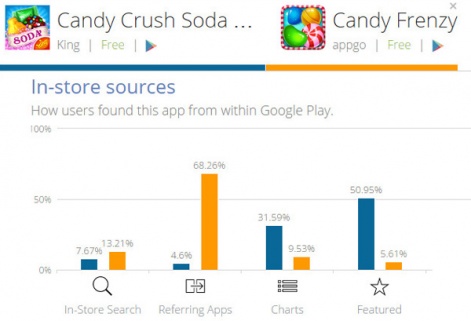Data is now an essential element of every free-to-play game developer's business.
For that reason the variety and scope of the available data is growing too; from what's going on inside your games to competitive analysis of the app stores and how people are finding games.
One company looking to provide such details is SimilarWeb, which is transfering its smarts gained from web analysis to mobile, recently raising $15 million to accelerate its push into the new space.
We caught up with SVP, Marketing & Operation Gali Arnon to find out more about its plans.
Pocket Gamer: Can you give us some background about SimilarWeb?
Gali Arnon: SimilarWeb was founded in 2009 to help people discover sites similar to ones they liked.
In 2013, the company launched SimilarWeb Pro to measure the digital world. SimilarWeb collects data from a wide range of sources and uses that data to provide a comprehensive platform, which reveals the marketing strategies for any website or mobile application.
In the next few weeks, we'll be launching the second phase of our Mobile App Analysis product which analyzes how apps are being used.Gali Arnon
With this marketing intelligence available for any competitor, marketers are using SimilarWeb to establish their marketing strategy, build better campaigns, find new opportunities, and stay ahead of the competition.
You've built your reputation on web site analytics so when did you decide to get involved with mobile apps?
In 2011. The idea behind SimilarWeb was to offer a new and innovative way to measure the web so that marketers would be able to draw intelligent insights and make smarter business decisions based on data. To achieve this goal, we launched SimilarWeb.com and our paid platform SimilarWeb Pro, but by then we realized that the web was only part of the picture.
In early 2014 we introduced mobile web measurement with plans for mobile apps as well. In September we launched the first part of our Mobile App Analysis product, which focuses on user acquisition and app store optimization.
In the next few weeks, we'll be launching the second phase of our Mobile App Analysis product which analyzes how apps are being used.
We call this App Engagement and it will include statistics about active users, usage, retention rate and usage patterns by hour and day. Today we are a one-stop-shop for measuring the entire digital world.
What are the key challenges in terms of moving your web expertise to mobile?
The biggest challenge for us has been building a portfolio of data sources. Before launching SimilarWeb Pro the company spent 2 years in secret just building a portfolio of data sources that today is the largest in the industry, covering over 200 countries.
To reach the same scale on mobile that we have on the web is one of the challenges we're facing, but we're successfully handling the ongoing process of product improvements.
What do you think is the key information that you can provide to mobile developers in terms of market and competitor trends?
We provide a single-view dashboard of the top ranking charts for 60+ different countries. In conjunction with these charts, we show trend information so you can spot the top rising and falling apps within seconds.
Our engagement features provide mobile developers with a unique understanding of competitors' apps showing the true value of the app, rather than relying on estimations that are based on ranks or ratings.

We also provide the top keywords used within the Google Play Store. Developers, publishers and advertisers can use this data to see the top trending keyword, based on traffic they are driving to apps from search in the app store, as well as on search engines. Each keyword can then be analyzed individually to see which apps are getting the market share.
I think we need to emphasize the new assets of mobile engagement here - number of active users, retention and so on. This is the type of data that no one else provides.
Can you talk about how you generate information such as in-store and external traffic sources for apps and games?
We collect data from a wide range of sources. Our most important sources are Internet Service Providers who sell data to us, and our panel of app users who share their anonymous click-stream data with us.
Our panel is the largest in the industry with tens of millions of users.
How do you deal with extracting information about Apple's App Store, which is obviously a much more closed ecosystem than Google Play?
Both stores present different challenges. We provide rankings and ratings data for both stores. We also provide traffic sources for both stores, including keyword data.
China is a market we're working on right now.Gali Arnon
However, getting the market share per keyword from the Apple store has proven more challenging and is something that we're still working on, whereas we already provide that service for Google Play.
Are there particularly geographical locations that you're currently looking to extend your services to cover?
We already have data for 60+ countries; now we're adding countries based on customer request. China, for instance, is a market we're working on right now.
We're open to hearing from a wider audience, like the readers of PocketGamer.biz, if there are markets that they feel are underrepresented, and we would be happy to consider them for our roadmap.
You can check out SimilarWeb services here.





















